Monna Barrick presents “Desert Southwest” Oil Paintings
See these beautiful original oil paintings with a focus on Desert Southwest scenes, landscapes, individuals on my website: www.MonnaBarrick.com
See these beautiful original oil paintings with a focus on Desert Southwest scenes, landscapes, individuals on my website: www.MonnaBarrick.com
For full view of artwork, go to webpage.
For full view of artwork, go to webpage.
——————————————————————————————————–

Monna Barrick
Hi, I’m Monna Barrick, originally from Oklahoma and have lived in Mesa, Arizona for many years. Since 1982,
I have been lucky enough to make my living as an artist, having studied with such notables as Leon Franks, John Howard Sanden, Bettina Steinke, Leslie DeMille and Norman Rockwell’s famous art course instructors.
Some of my art images are printed by La Casa Card Company of Arizona as greeting cards.
My works are impressionism and are mostly done with palette knife, combining some details with the brush. I love to paint all subjects including this beautiful desert so rich in color.
A wonderful influence in my life was my late husband Jim Barrick, a professional artist in his own right. I learned many valuable lessons from him. I now teach art and painting two days a week in Mesa.
Life is great when your job is doing what you love!
I really hope you like what you see here as much as I enjoy painting them. Thank you for looking!
Monna

Fine Art, Original Oil Paintings, focusing on the beautiful desert flora and fauna of Arizona and the Southwest.
Vibrant paintings of native indians and their culture.
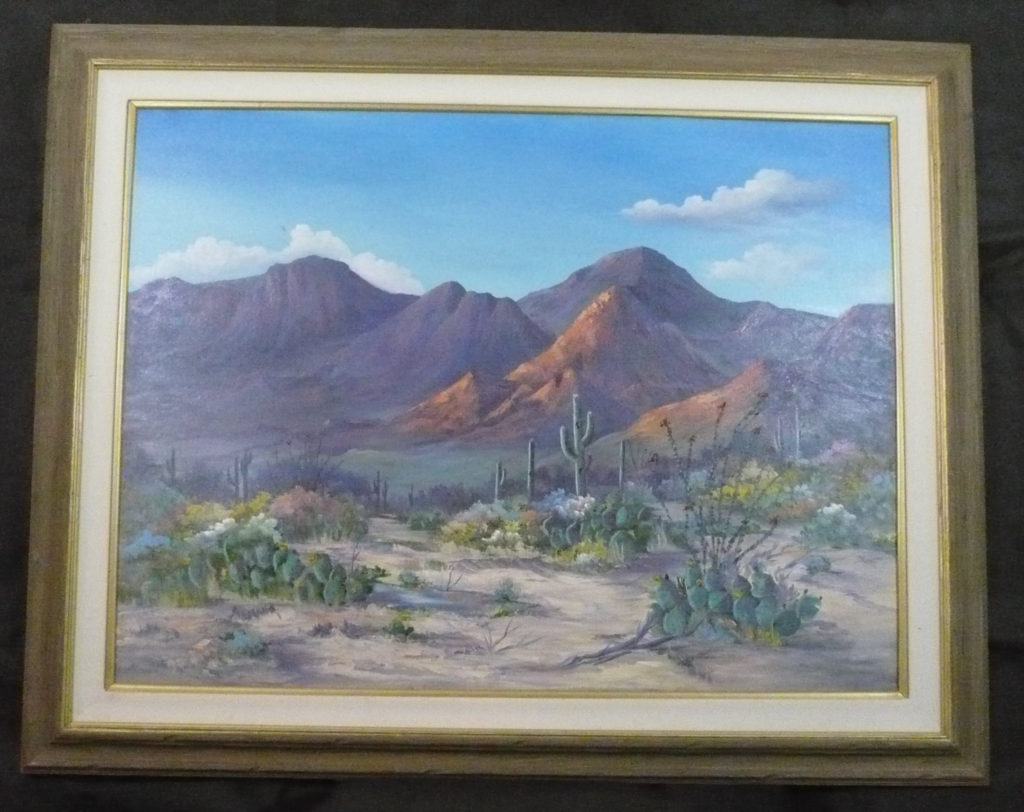
4 “Elephant Head in Tubac” 30×40 Framed
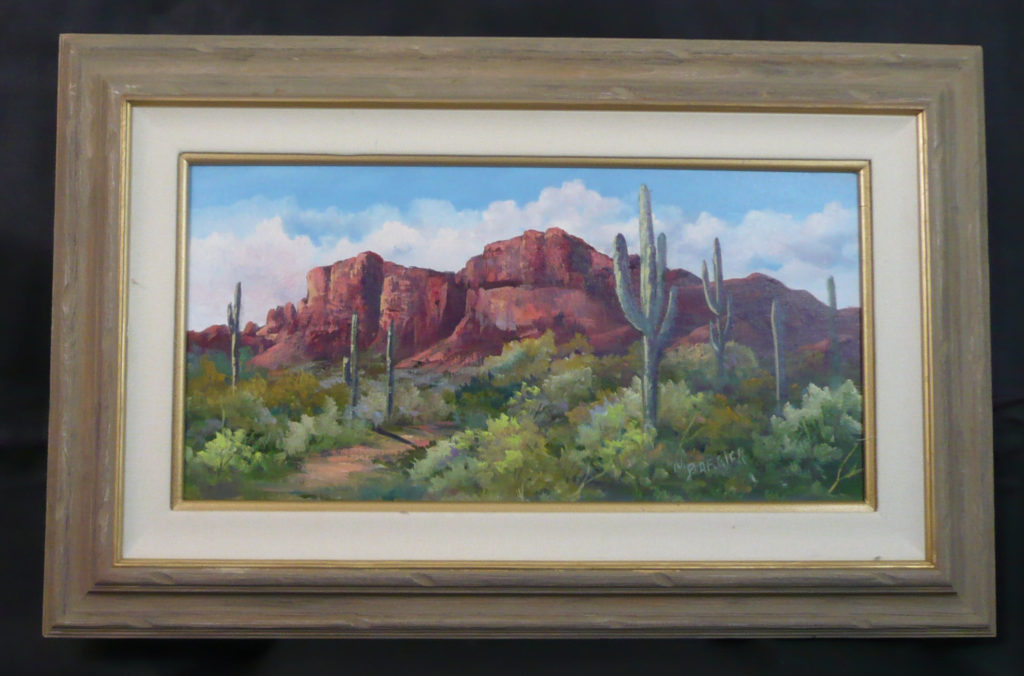
12 “Superstitions” 12×24 Framed
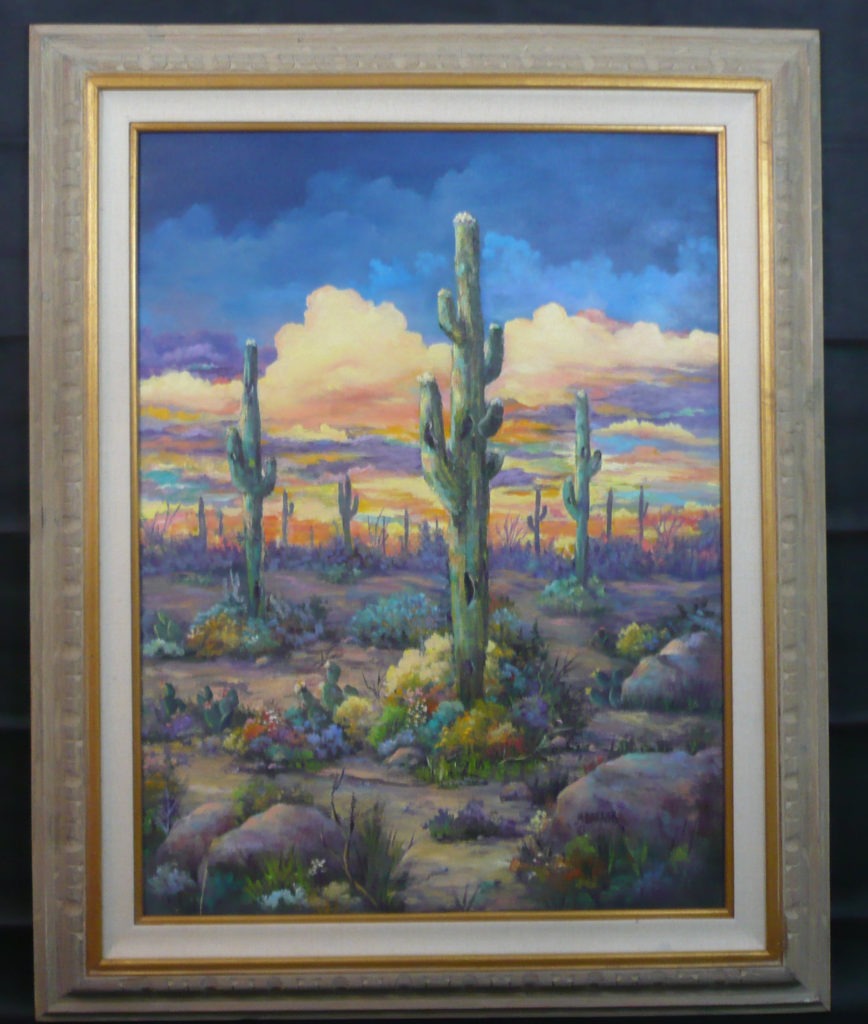
23 “Crayola Sunset” 30×40 Framed SOLD
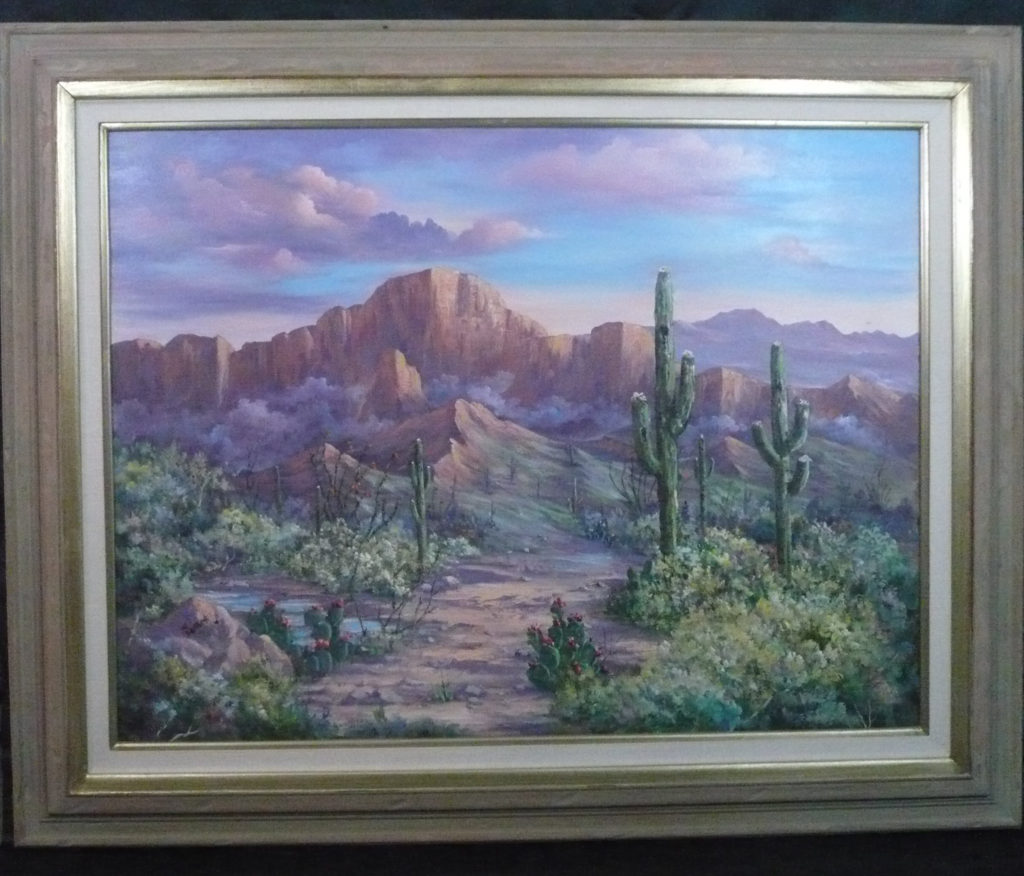
36X48 SOLD
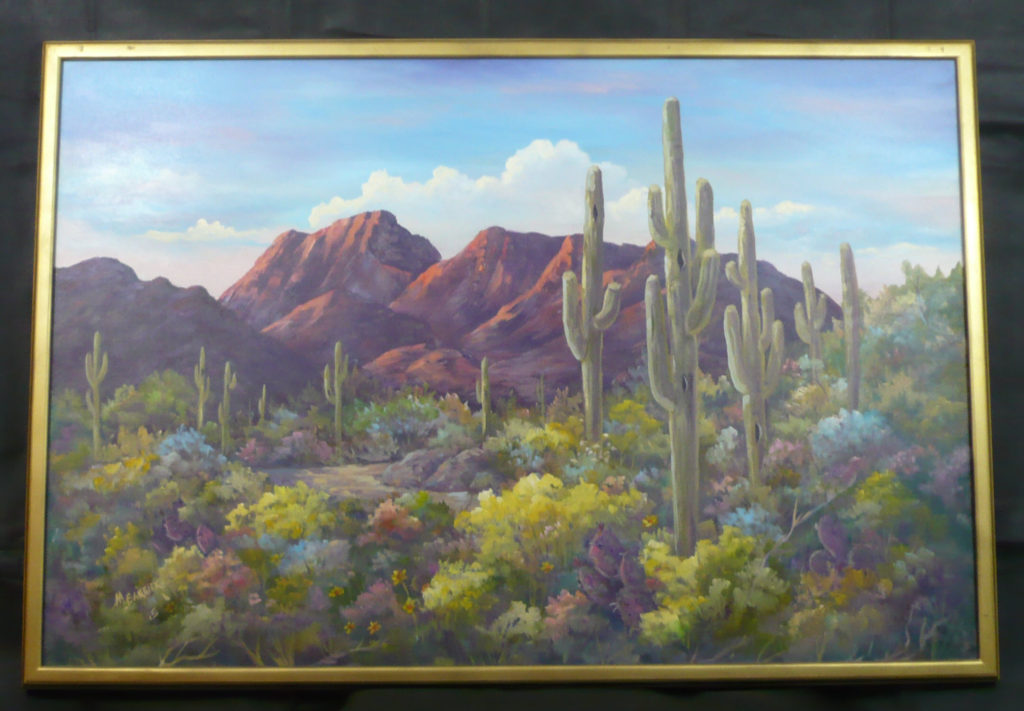
3 “Down Tubac Way” 30×45 Framed SOLD
GO TO WEBSITE TO SEE ALL AVAILABLE
ORIGINAL OIL PAINTINGS BY MONNA BARRICK: www.MonnaBarrick.com
Fine Art, Original Oil Paintings, focusing on the beautiful desert flora and fauna of Arizona and the Southwest. Vibrant paintings of native indians and their culture.
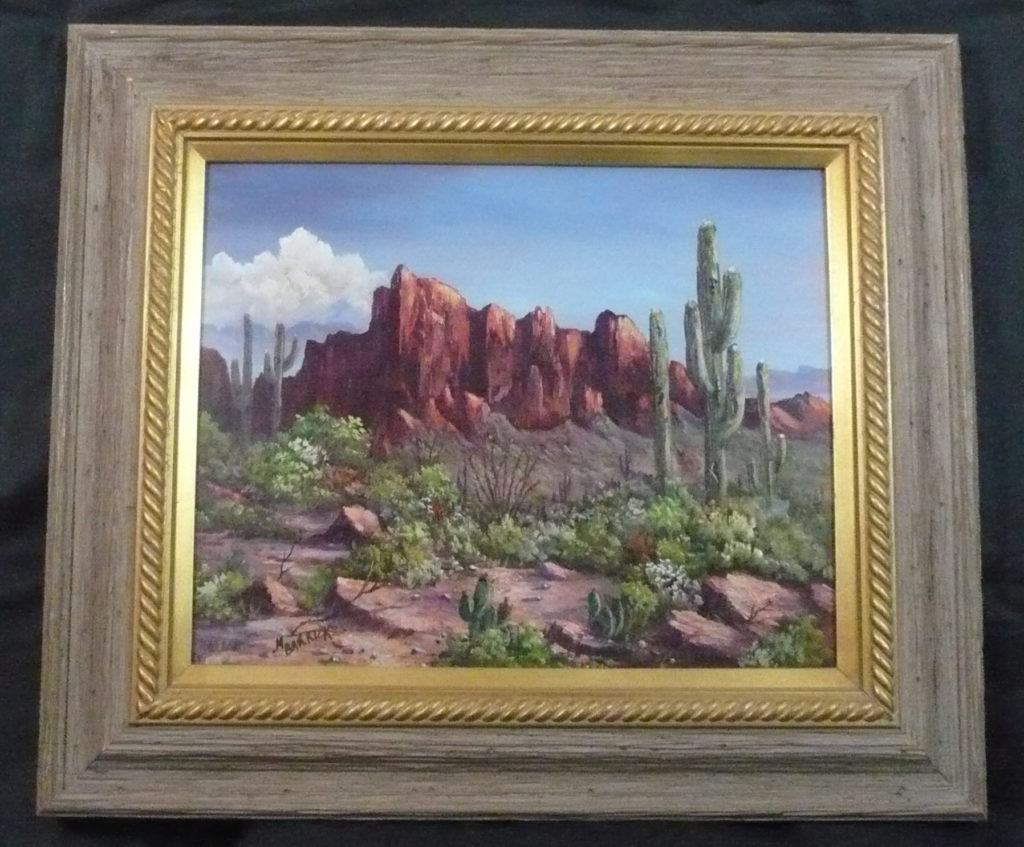
11 “Eagletail Rock” 16×20 Framed (shown above)
Go to www.MonnaBarrick.com
| Item # | Painting Title | Size |
| 2 | “End of Flight” | 30×40 Framed |
| 3 | “Down Tubac Way” SOLD | 30×45 Framed |
| 4 | “Elephant Head in Tubac” | 30×40 Framed |
| 5 | “White Poppy’s” | 30×40 Gallery Wrapped |
| 6 | “Indian Lady Going to Pick Berries” | 24×36 Not Framed |
| 7 | “Roundup” | 22×28 Not Framed |
| 8 | “Afternoon Tea in Mexico” | 18×24 Not Framed |
| 9 | “At Watering Hole” | 20×24 Glicee Print Wrapped |
| 10 | “Rocky Point” | 16×20 Framed |
| 11 | “Eagletail Rock” | 16×20 Framed |
| 12 | “Superstitions” | 12×24 Framed |
| 13 | “Desert Beauty” | 20×24 Framed |
| 14 | “Tiaquepaque” | 10×20 Framed |
| 15 | “Life on the Plains” | 18×24 Framed |
| 16 | “Peasant Girl and Dog” | 16×20 Framed |
| 17 | “Serenading Quail” | 11×14 Framed |
| 18 | “Italy” | 10×20 Framed |
| 19 | “Dancer-Female” | 10×20 Framed |
| 20 | “Portrait of an Indian Lady” | 22×28 Not Framed |
| 21 | “Dancer-Male” | 10×20 Framed |
| 22 | “Yellow Prickly Pears” | 12×24 Framed |
| 23 | “Crayola Sunset” SOLD | 30×40 Framed |
| 24 | “Chief” | 24×36 Framed |
| 25 | “Tiaquepaque Court Yard” | 12×16 Not Framed |
| 26 | “Indian Child” | 11×14 Not Framed |
| 27 | “Springtime in the Mountains” | 16×20 Not Framed |
| 28 | “Pinetop Barn” | 16×20 Not Framed |
| 29 | “Italy Windowbox” | 8×10 Framed |
| 30 | “Gamble Quail” | 8×10 Framed |
| 31 | “Pinetop” | 24×36 Enhanced Glicee Print Framed |
Read more about the Prickly Pear Cactus below.
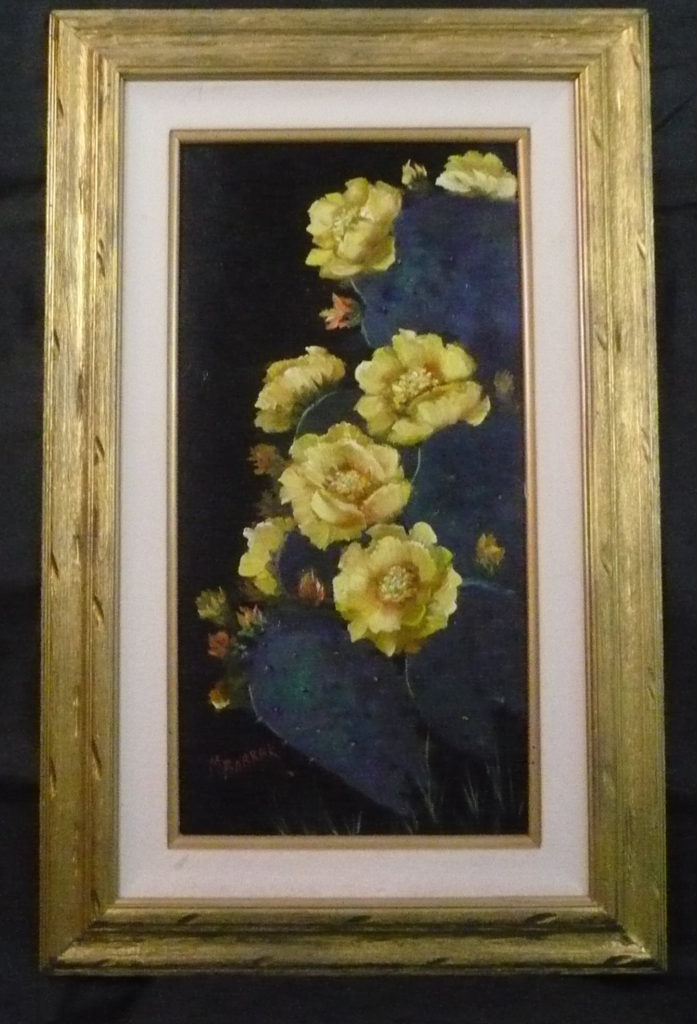
22 “Yellow Prickly Pears” 12×24
DESCRIPTION BELOW FROM WWW.DESERTUSA.COM:
Most prickly pear cactus have yellow, red or purple flowers, even among the same species. They vary in height from less than a foot (Plains, Hedgehog, Tuberous) to 6 or 7 feet (Texas, Santa Rita, Pancake). Pads can vary in width, length, shape and color. The Beavertail, Santa Rita and Blind Pear are regarded as spineless, but all have glochids.

Prickly Pear Cactus flowers
Prickly pear cactus information
Prickly pear cactus represent about a dozen species of the Opuntia genus (Family Cactaceae) in the North American deserts. All have flat, fleshy pads that look like large leaves. The pads are actually modified branches or stems that serve several functions — water storage, photosynthesis and flower production. Chollas are also members of the Opuntia genus but have cylindrical, jointed stems rather than flat pads.
Like other cactus, most prickly pears and chollas have large spines — actually modified leaves — growing from tubercles — small, wart-like projections — on their stems. But members of the Opuntia genus are unique because of their clusters of fine, tiny, barbed spines called glochids. Found just above the cluster of regular spines, glochids are yellow or red in color and detach easily from the pads. Glochids are often difficult to see and more difficult to remove, once lodged in the skin.

Tiny, barbed spines called glochids.
The fruits of most prickly pears are edible and sold in stores under the name “tuna.” Prickly pear branches (the pads) are also cooked and eaten as a vegetable. They, too, are sold in stores under the name “Nopalito.” Because of the glochids, great care is required when harvesting or preparing prickly pear cactus. Both fruits and pads of the prickly pear cactus are rich in slowly absorbed soluble fibers that may help keep blood sugar stable.
Range & Habitat
Prickly pear cactus are found in all of the deserts of the American Southwest, with different species having adapted to different locale and elevation ranges. Most require course, well-drained soil in dry, rocky flats or slopes. But some prefer mountain pinyon/juniper forests, while others require steep, rocky slopes in mountain foothills. What is that white stuff on my cactus? The cochineal covers much of the lower elevations in the western United States and Mexico. It feeds almost solely on the pads of selected prickly pear cacti species.

There has been medical interest in the Prickly Pear plant. Some studies have shown that the pectin contained in the Prickly Pear pulp lowers levels of “bad” cholesterol while leaving “good” cholesterol levels unchanged. Another study found that the fibrous pectin in the fruit may lowers diabetics’ need for insulin. Both fruits and pads of the prickly pear cactus are rich in slowly absorbed soluble fibers that help keep blood sugar stable. There are on going studies and at this point there are no proven results on humans. You can make your own study and see if works for you, which is the only test that really counts.
In addition to the North American native prickly pear cactus listed below, there are many varieties, non-native imports and hybrids, so identification can often be difficult. Information on the 15 species below is based on wild, non-cultivated samples.
Read more: http://www.desertusa.com/cactus/prickly-pear-cactus.html#ixzz4USaazJID
